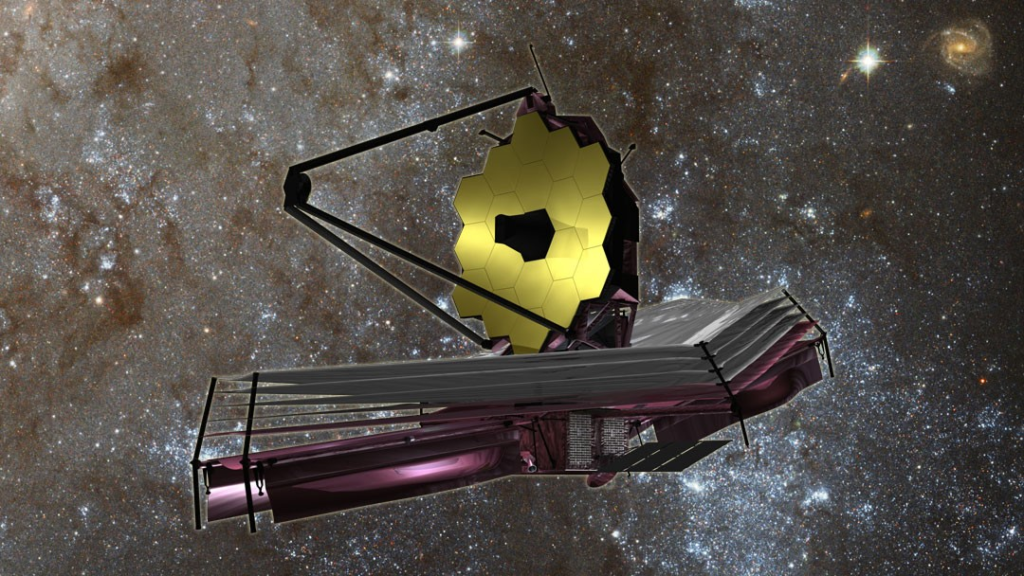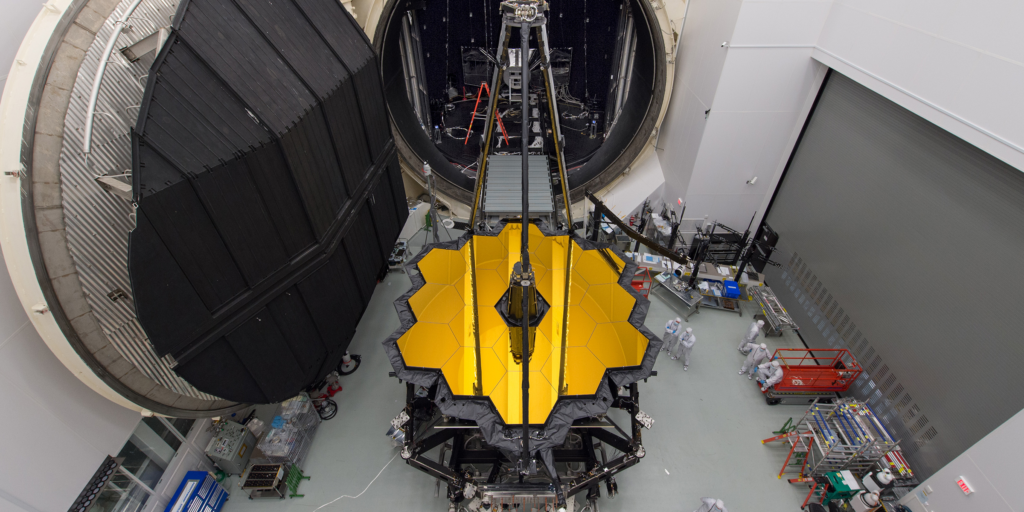
The Exact Future Schedule Of The James Webb Space Telescope
The James Webb Space Telescope has finally completed its month long preparations for consistent science operations. NASA recently released some of the first official images to give us a taste of what’s to come from the next generation space telescope. This brings up the question, now that Webb is ready for science, what exactly should we expect from the telescope in the coming months?
Webb is only expected to be operational for a few years. This means that every second the telescope is operational, it needs to be working. For these reasons among others, NASA planned out the exact operations of the telescope years in advance. This includes the different types of observations, how long they will take, and what data and images they will produce.
The Universe is unimaginably big and filled to the brim with different celestial bodies and points of interest for the agency and scientists around the globe. This made the decision and schedule extremely important for Webb. Here I will go more in-depth into the exact schedule of Webb, what to expect in the coming months, and more.
Webb’s Schedule

When it comes to Webb’s future schedule, it is separated into multiple different sections. The one I will focus on today is called the Director’s Discretionary Early Release Science or (DD-ERS) program. NASA highlights that in order to realize the James Webb Space Telescope’s full science potential, it is imperative that the science community quickly learns to use its instruments and capabilities. The DD-ERS observations will take place during the first 5 months of JWST science operations, following the 6-month commissioning period. The program selections were made in November 2017 and represent six science categories. These categories include Galaxies and Intergalactic Medium, Massive Black Holes and Their Host Galaxies, Planets and Planet Formation, Solar Systems, Stellar Physics, and finally Stellar Populations. These six categories represent the general topics that Webb is studying right now and will continue to look more in depth for the next 5 months.
Taking a closer look, you can expand each category to reveal specific programs for each of the categories listed prior. In total there are 13, starting with A JWST Exploration of Galaxy Formation and Evolution from Cosmic Dawn to Present Day. Specifically, in this first upcoming program, they propose a carefully designed set of observations of the lensing cluster Abell 2744 to study intrinsically faint magnified galaxies from the epoch of reionization to redshift of 1, demonstrating and characterizing complementary spectroscopic modes with NIRSPEC and NIRISS. The observations are designed to address the questions: When did reionization happen and what were the sources of reionizing photons? And how do baryons cycle in and out of galaxies? This dataset with deep spectroscopy on the cluster and deep multiband NIRCAM imaging in parallel will enable a wealth of investigations and will thus be of interest to a broad section of the astronomical community. Another program within the Galaxy section proposes high signal-to-noise NIRSpec and MIRI IFU spectroscopy, with accompanying imaging, for 4 gravitationally lensed galaxies. This program will spatially resolve the star formation in galaxies across the peak of cosmic star formation, in an extinction-robust manner. Lensing magnification pushes JWST to the highest spatial resolutions possible at these redshifts, to map the key spectral diagnostics of star formation and dust extinction. This program uses key instrument modes, heavily exercising the NIRSpec and MIRI IFUs. The resulting science-enabling data products will demonstrate JWST’s capabilities and provide the extragalactic science community with rich datasets. In four deliveries, they will provide high-quality Level 3 data cubes and mosaics, empirical star formation diagnostics, maps of star formation, extinction, and physical properties, a tool for comparing NIRSpec and MIRI data cubes, and cookbooks on data reduction, analysis, and calibration strategy.
Moving on to the next section which focuses on Black Holes and their host galaxies. This section only has two programs rather than 4. One program highlights that integral field spectroscopy has become an invaluable tool for investigating the physical conditions and dynamics deep inside galaxy nuclei. The integral field spectrograph on JWST provides some crucial advantages over those on AO-assisted ground-based telescopes like Gemini and VLT.In particular, JWST will provide a stable and diffraction-limited point spread function (PSF) with no seeing halo, and the background will be significantly reduced resulting in shorter exposure times to achieve a benchmark signal-to-noise ratio, even for late-type galaxies that have shallower central cusps and fainter central surface brightnesses, and for which the exposure times required from the ground may be prohibitive. They are particularly interested in comparing black hole masses derived from the modeling of nuclear stellar dynamics to masses derived from reverberation mapping in the same galaxies. With this Early Release Science proposal, they request a small investment of time to clearly demonstrate JWST’s capabilities in spatial and spectral resolution relative to the stringent technical requirements for direct black hole mass measurements. The technically demanding nature of the requisite measurements will allow us to explore the limits of what is possible to achieve with the NIRSpec IFU, thus providing technical guidance for a wide range of studies that seek to probe the physics of black hole feeding and feedback and their links to galaxy and black hole co-evolution.
The next section is about planets and planet formation, and only has two programs both of which focus on exoplanets. This program highlights that JWST presents the opportunity to transform our understanding of planets and the origins of life by revealing the atmospheric compositions, structures, and dynamics of transiting exoplanets in unprecedented detail. However, the high-precision, time-series observations required for such investigations have unique technical challenges, and our prior experience with HST, Spitzer, and Kepler indicates that there will be a steep learning curve when JWST becomes operational. They propose an ERS program to accelerate the acquisition and diffusion of technical expertise for transiting exoplanet observations with JWST. This program will also provide a compelling set of representative datasets, which will enable immediate scientific breakthroughs. They will exercise the time-series modes of all four instruments that have been identified as the consensus highest priority by the community, observe the full suite of transiting planet characterization geometries (transits, eclipses, and phase curves), and target planets with host stars that span an illustrative range of brightnesses.
Moving on to the solar system section, there is only a single program. It features multiple goals including, characterizing Jupiter’s cloud layers, winds, composition, auroral activity, and temperature structure; producing maps of the atmosphere and surface of volcanically-active Io and icy satellite Ganymede to constrain their thermal and atmospheric structure, and searching for plumes; and characterize the ring structure, and its sources, sinks, and evolution. This program will thus demonstrate the capabilities of JWST’s instruments on one of the largest and brightest sources in the Solar System and on very faint targets next to it. They will also observe weak emission/absorption bands on strong continua, and with NIRIS/AMI they will maximize the Strehl ratio on unresolved features, such as Io’s volcanoes. The fifth section is stellar physics and has three different programs. One of which points out that massive stars disrupt their natal molecular cloud material by dissociating molecules, ionizing atoms and molecules, and heating the gas and dust. These processes drive the evolution of interstellar matter in our Galaxy and throughout the Universe from the era of vigorous star formation at redshifts of 1 through 3, to the present day. Much of this interaction occurs in Photo-Dissociation Regions (PDRs) where far-ultraviolet photons of these stars create a largely neutral, but warm region of gas and dust. PDR emission dominates the IR spectra of star-forming galaxies and also provides a unique tool to study in detail the physical and chemical processes that are relevant for most of the mass in inter- and circumstellar media including diffuse clouds, protoplanetary disk -and molecular cloud surfaces, globules, planetary nebulae, and starburst galaxies.
Finally, you have stellar populations with a single program. This program will establish JWST-optimized methodologies in six scientific areas: star formation histories, measurement of the sub-Solar mass stellar IMF, extinction maps, evolved stars, proper motions, and globular clusters, all of which will be common pursuits for JWST in the local Universe. These observations of globular cluster M92, ultra-faint dwarf Draco II, and star-forming dwarf WLM, will be of high archival value for other science such as calibrating stellar evolution models, measuring properties of variable stars, and searching for metal-poor stars.
Conclusion
Webb is finally complete and will be extremely busy for many years to come. Here I highlighted some of the specific programs Webb will work on over the next few months. We will have to wait and see how it progresses and the impact it has on the space industry.
